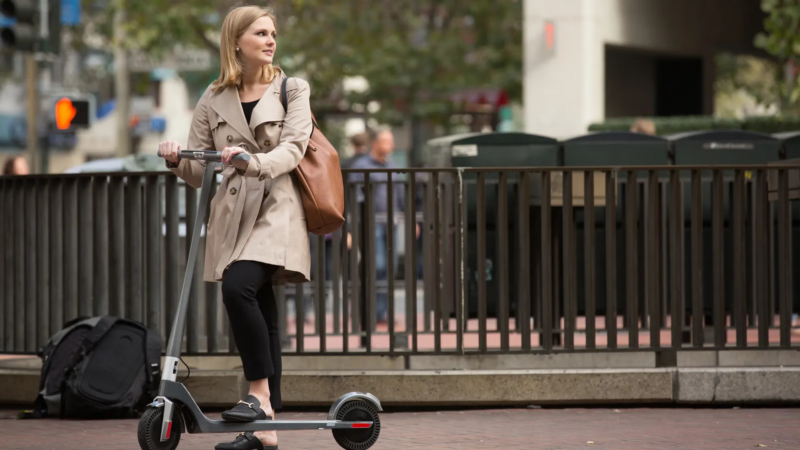Electric scooters have become a major part of urban transport solutions around the world. But a big question remains: can you ride an electric scooter on the road in different countries without running into legal issues? This article will give you clear, detailed answers for businesses, travelers, and fleet operators alike. You will see where you can ride legally, what documents are needed, and how to avoid penalties abroad. Ready for the good part? Let’s break down the complex rules into simple facts you can apply anywhere.
1. Are electric scooters legal on public roads in most countries?
Electric scooters are not universally legal on public roads yet. In some countries, they are considered bicycles, while in others, they are motor vehicles. But here’s the kicker… regulations change fast, and many cities have local laws that override national standards. In Europe, countries like France and Germany allow scooters on certain roads with speed restrictions. In Asia, Japan restricts road use heavily unless the scooter is modified for compliance. Meanwhile, in the United States, laws vary significantly from state to state.
Even within Europe, the rules are not unified. Sweden treats scooters like bicycles, requiring no license, while the UK only allows scooter use on public roads via approved rental trials. Latin America, led by countries like Brazil and Argentina, has been opening up rapidly, but enforcement remains inconsistent.
Scooter Legality Around the World
| Region | Road Legality | Notes |
|---|---|---|
| Europe | Mostly allowed | Some speed limits apply |
| Asia | Restricted or banned | Varies by city |
| Americas | Growing acceptance | State and city variations |
| Middle East | Allowed with rules | Infrastructure still developing |
Understanding the local environment is vital before assuming you can ride freely.
2. What are the road laws for electric scooters in the USA?
Across the United States, scooter laws are a patchwork of regulations. Some states like California actively promote scooter use, allowing them on bike lanes and certain roads. Other states such as New York City ban private scooters but allow rentals under specific programs. What’s the real story? There is no nationwide law yet, meaning every jurisdiction decides for itself.
For example, in Texas, you can ride an electric scooter on roads with speed limits under 35 mph, while in Florida, scooters are restricted from sidewalks but allowed on most roads. Helmet use is often mandatory for riders under 18, but not always enforced for adults.
USA Scooter Law Overview
| State | Legal Road Use | Special Conditions |
|---|---|---|
| California | Yes | Max 15 mph, bike lanes preferred |
| New York | Limited | Rentals allowed, private use tricky |
| Texas | Yes | Roads under 35 mph only |
Failing to understand these distinctions can lead to hefty fines or even scooter confiscation.
3. Can you legally ride electric scooters on UK roads?
In the United Kingdom, the situation is tricky. Private electric scooters are technically illegal for use on public roads unless part of authorized rental trials. But here’s the kicker… many riders still use them in cities like London, often overlooked by police unless causing accidents or riding dangerously.
Rental scooters from licensed companies are legal and must follow strict rules: capped speeds at 15.5 mph, compulsory insurance provided by the rental operator, and road access limited to certain areas. Helmets are recommended but not mandatory.
UK Electric Scooter Regulations
| Category | Legal Status | Key Requirements |
|---|---|---|
| Private Scooters | Illegal on public roads | Only on private property |
| Rental Scooters | Legal | Insurance included |
Pending legislation could change this, making 2025 a turning point for private scooter use.
4. What are the road rules for electric scooters in Germany?
Germany took an early lead in regulating electric scooters, bringing them under the same traffic laws as bicycles. Ready for the good part? If you want to ride legally in Germany, you need to stick to bike lanes or streets with speed limits under 50 km/h (about 31 mph).
Scooters must be equipped with front and rear lights, reflectors, a bell, and brakes. Users must also be over 14 years old, and insurance coverage is mandatory. Tiny license plates are issued to indicate valid insurance.
Germany Scooter Rules Summary
| Requirement | Details |
|---|---|
| Speed Limit | 20 km/h max |
| Insurance | Mandatory with visible plate |
| Riding Areas | Bike lanes preferred |
Compliance is heavily enforced, especially in big cities like Berlin and Munich.
5. How does France regulate electric scooter use on roads?
France is another country that rapidly embraced scooters but quickly introduced firm regulations. Here’s where it gets interesting… Scooters can legally use bike lanes and city streets but are banned from sidewalks unless pushed by hand.
Speed is capped at 25 km/h, and riders must be at least 12 years old. Wearing reflective clothing is required at night, and riding without front and rear lights can result in fines. Paris even requires scooters to have an audible warning device like a bell.
France Scooter Law Highlights
| Rule | Requirement |
|---|---|
| Speed Cap | 25 km/h |
| Helmet | Recommended under 18 |
| Lights and Reflectors | Mandatory at night |
Violating these rules can lead to instant fines up to €135.
6. Are scooters allowed on roads in Spain and Italy?
Spain and Italy have rapidly adapted to the rise of electric scooters but each country handles regulation differently. But here’s the kicker… city-level rules often override national guidelines, creating a patchwork of riding experiences across regions. In Spain, national laws define scooters as personal mobility vehicles (PMVs), meaning they can ride on roads with a speed limit below 30 km/h but cannot use sidewalks or highways. Helmets are recommended, and lights are mandatory at night.
Italy follows a similar structure. Scooters are allowed on urban roads and cycle paths, and a maximum speed of 25 km/h applies. Helmet use is obligatory for riders under 18. Fines for violations, such as riding on sidewalks or using mobile phones while operating a scooter, are heavily enforced in cities like Rome and Milan.
Spain and Italy Scooter Laws Overview
| Country | Road Access | Key Restrictions |
|---|---|---|
| Spain | Yes, under 30 km/h | No sidewalks, helmet recommended |
| Italy | Yes, urban and cycle paths | Helmets under 18, no phones |
Tourists and business users must check local signage and city-specific scooter policies before riding.
7. Can electric scooters be used on roads in Australia and New Zealand?
Australia and New Zealand each approach electric scooters cautiously but progressively. Here’s where it gets interesting… regulation differs significantly by state and city. In Queensland and ACT, electric scooters are allowed on footpaths, shared paths, and roads with a limit of 50 km/h or less, provided they stay under a 25 km/h speed cap. Helmets are mandatory.
New Zealand legalized e-scooters on footpaths and roads without the need for a license or registration, though some local councils have begun tightening regulations following accident reports. Auckland, for instance, enforces low-speed zones and designated riding areas.
Australia and New Zealand Scooter Regulations
| Country | Legal Road Use | Notable Rules |
|---|---|---|
| Australia (Queensland) | Yes | Helmet, speed limits enforced |
| New Zealand | Yes | No license, local rules vary |
Both countries emphasize rider responsibility and impose strict penalties for reckless use.
8. What are Asia’s rules for road riding electric scooters?
Asia presents a varied legal landscape for electric scooters. Ready for the good part? some nations like Singapore and Japan have extremely strict rules, while others like South Korea and China are more lenient, especially in urban areas.
In Japan, scooters are treated as motor vehicles, meaning riders must hold a driver’s license, register their scooter, and equip it with a license plate and mirrors. South Korea permits electric scooter use on bike paths and some roads but mandates helmet use and enforces a minimum rider age of 16.
China’s approach varies city by city. Some cities encourage scooter use for urban mobility, while others have banned scooters from main roads to reduce congestion and accident rates.
Asia Scooter Law Comparison
| Country | Road Legality | Unique Requirements |
|---|---|---|
| Japan | Very limited | License, registration, mirrors |
| South Korea | Allowed with conditions | Helmet, age restriction |
| China | Varies by city | Often unregulated or restricted |
Checking local rules is non-negotiable before considering road use in Asia.
9. Do Middle Eastern countries permit scooters on roads?
The Middle East is catching up with global trends in micromobility. But here’s the kicker… policies often aim more at tourists and expats than locals. In the UAE, cities like Dubai have designated scooter zones, rental programs, and clear rules: speed caps of 20 km/h, mandatory helmets, and insurance for rentals.
Saudi Arabia permits scooter use in select urban areas but enforces stringent traffic laws. Israel promotes scooters heavily, allowing road and bike path access while encouraging helmet use and nighttime lighting.
Middle East Scooter Laws Overview
| Country | Legal Use | Notable Rules |
|---|---|---|
| UAE | Yes, designated areas | Helmet mandatory, speed caps |
| Saudi Arabia | Limited urban use | Strict traffic enforcement |
| Israel | Allowed | Bike paths preferred |
Operators must follow local licensing procedures carefully, especially when launching fleet services.
10. What road laws apply to electric scooters in South America?
South America has rapidly adopted electric scooters but legal frameworks are still catching up. Here’s where it gets interesting… Brazil, Chile, and Argentina each have different approaches.
Brazil allows scooters on bike paths and low-speed roads. Riders must wear helmets, and cities can impose additional rules. In Chile, a 25 km/h limit applies, and scooters are banned from sidewalks. Argentina’s Buenos Aires leads in micromobility, promoting scooter use but with strict adherence to urban road safety standards.
South America Scooter Law Comparison
| Country | Road Access | Key Rules |
|---|---|---|
| Brazil | Yes | Helmet required, city variations |
| Chile | Yes | Speed caps, no sidewalks |
| Argentina | Yes | Urban standards enforced |
For businesses expanding into Latin America, early engagement with local transport authorities is essential.
11. How do scooter laws differ between private and rental models?
Private and rental scooters often face different regulatory frameworks. But here’s the kicker… many countries only allow rentals because they’re easier to monitor, insure, and recall if necessary.
For instance, the UK permits rentals on public roads while banning private scooter use. France requires rental companies to ensure their scooters meet safety standards, while private owners are responsible for their own compliance. In Germany, all scooters — private or rented — must adhere to strict insurance and safety rules.
Private vs Rental Scooter Regulations
| Category | Rules Overview |
|---|---|
| Private Scooters | Often banned or restricted |
| Rental Scooters | Legal with compliance guarantees |
Operators considering launching services abroad must carefully navigate these dual standards.
12. What documents or licenses are required to ride abroad?
Travelers and locals alike often wonder whether paperwork is necessary. Ready for the good part? most countries allow riding without a license if the scooter’s top speed is under a certain limit (usually 25 km/h).
However, Japan, Singapore, and some parts of South Korea require either a driving license or special certification. Rental companies typically cover insurance requirements, but private scooter owners might need to purchase liability coverage separately.
Document Requirements Overview
| Country | License Needed? | Insurance Requirement |
|---|---|---|
| Japan | Yes | Mandatory |
| Singapore | Yes for higher speeds | Mandatory |
| France | No for low speeds | Rental insurance provided |
Checking local licensing laws before traveling saves trouble later.
13. What safety equipment is mandatory in each country?
Safety rules are not optional in most parts of the world. But here’s the kicker… even if helmets are not legally required, insurance claims may be denied if riders aren’t wearing one during an accident.
Lights, reflectors, horns, and sometimes protective clothing like gloves or jackets are mandatory in many cities. In Germany and France, night-time riding without reflectors is a fineable offense. Australia enforces helmet laws nationwide with few exceptions.
Mandatory Equipment Overview
| Equipment | Commonly Required In |
|---|---|
| Helmet | Australia, Germany, France |
| Lights | Europe, Middle East |
| Reflectors | Required for night riding |
Investing in good safety gear always pays off in both safety and legal protection.
14. Can tourists legally ride e-scooters in foreign countries?
Short answer: often yes, but it depends. Here’s where it gets interesting… tourists using rentals typically enjoy the same rights and responsibilities as locals, provided they follow all local regulations.
In places like Paris, Rome, or Barcelona, tourists can rent e-scooters easily via apps. However, private scooters brought from abroad may not be compliant with local laws, especially regarding speed limits, registration, or safety features.
Tourist Riding Permissions
| City | Tourist Rentals Allowed | Notes |
|---|---|---|
| Paris | Yes | Must use rental companies |
| Rome | Yes | Local ID sometimes requested |
| Barcelona | Yes | Must follow road rules strictly |
Preparation is key to avoid costly fines or scooter confiscation.
15. What should you check before riding a scooter in another country?
Jumping on a scooter abroad without preparation can cause major issues. But here’s the kicker… knowing the local speed limits, sidewalk rules, and helmet requirements ahead of time saves frustration and money.
Many cities require scooters to be geo-fenced, limiting riding to specific zones. Apps provided by rental companies usually display these zones clearly. Carrying personal insurance that covers scooter use abroad is highly advisable.
Pre-Ride Checklist
| Item | Why It Matters |
|---|---|
| Local Speed Limits | Prevents fines and accidents |
| Helmet Requirements | Protects your safety and wallet |
| Insurance Coverage | Covers medical and liability costs |
Smart riders prepare before hitting foreign roads.
FAQ Section
Q1: What is the legal status of electric scooters abroad?
Electric scooters have varying legal statuses by country. Some allow road use with restrictions, others ban them entirely.
Q2: How does international scooter regulation work?
Each country sets its own rules. Some cities regulate scooters locally while others have national laws.
Q3: Can tourists ride electric scooters on public roads legally?
Yes, but only where scooters are allowed and often with safety gear and ID verification.
Q4: What equipment is required to ride scooters internationally?
Helmets, lights, and sometimes reflective gear or bells, depending on local laws.
Q5: Do you need a license to ride a scooter abroad?
In most countries, no license is needed for low-speed scooters, but some require ID or insurance.




